- Administrator
- Albums and Singles
 This sprawling, oft-fascinating limited edition double album of live collaborations features some rather surprising detours from Erik Carlson's previous work. As all of the pieces were composed specifically for performances at Providence's Cormack Planetarium, most of those detours lead towards some appropriately space music and krautrock-influenced places. Carlson, ably assisted by an array of like-minded experimentalists, seems quite at home outside the confines of his usual sound and continues his recent string of impressive albums.
This sprawling, oft-fascinating limited edition double album of live collaborations features some rather surprising detours from Erik Carlson's previous work. As all of the pieces were composed specifically for performances at Providence's Cormack Planetarium, most of those detours lead towards some appropriately space music and krautrock-influenced places. Carlson, ably assisted by an array of like-minded experimentalists, seems quite at home outside the confines of his usual sound and continues his recent string of impressive albums.
This is the first release in Eric Carlson’s alt-Space series, a planned succession of performances in non-tradition musical venues that are consciously shaped by the location itself. All of the works were composed and improvised (in almost complete darkness) around planetarium displays that Carlson designed with the staff. Aside from the obvious embrace of space-themed sounds (Eric uses samples of radiation, radio emissions, and other thematically appropriate sources), the performances on this album were further inspired by the blurring effects of the planetarium’s domed roof.
The first of the four 30 minute pieces is “The Basin of the Heavens,” a collaboration with Mudboy (Raphael Lyon). It begins with sustained, shimmering guitar and harmonium ambiance. Gradually, some tension and phantom melodic movement is added with passing tones and color is provided by Carlson's fragile web of treated guitars and Lyon's psychedelic organ noodling. As the song snowballs in intensity, it becomes conspicuously more and more like a freaky krautrock jam before the bottom drops out and it morphs into constantly shifting proggy ambience. However, around the 20-minute mark, things get a bit crazy and Eric and Raphael briefly erupt into a flurry of wildly panning radio emissions before easing back into their pulsing, jangling trippiness. Carlson makes quite a few unexpected (yet skilled) transitions on this album, and this piece is no exception, as it ends with a elegantly beautiful and floating coda that favorably calls to mind both Brian Eno’s Apollo and Eric Carlson’s own Charmed Birds album.
“Messier Object 45” is the first of two appearances by Black Forest/Black Sea’s Jeffrey Alexander (the title refers to the Pleiades, incidentally). It commences with a subtle, glimmering guitar loop and a great deal of cosmic and heavily delayed ambience and slowly builds into some throbbing, quietly intense, and rather menacing space rock. Oddly, Carlson and Alexander soon opt to take the music into much less interesting quavering ambient territory for a rather lengthy and momentum-killing stretch. Thankfully, it fades out around the 15-minute mark and the song starts again with a haunting duet between Eric’s melancholy minimalist guitar and some tortured howls and squawks that likely emanate from one of Alexander’s homemade instruments. Ultimately, it coheres into a droning and coruscating outro of layered guitars before fading out for the final time.
Jeffrey appears again on “Cassiopeia” alongside his bandmate, cellist Miriam Goldberg. It begins with a hobbling, yet insistent, plucked cello pattern lurking beneath a seething cloud of surprisingly harsh electronics and bow scrapes. The presence of Goldberg and her cello is quite welcome: she cuts through the heavily-processed and somewhat detached sounds surrounding her both violently and beautifully, resulting in the strongest and most dynamic piece on the album. As with all the previous songs, “Cassiopeia” consists of several movements, the second of which is extremely minimal and consists of a repeating plucked string pulsing beneath a host of creaks, scrapes, and whines. Then, unexpectedly, the trio launches into a mesmerizing and rather devastating reprise of the eerie middle section of “Messier Object 45.”
Carlson is joined by Eyes Like Saucers’ Jeffrey Knoch for the closer, “Lesser Dog, Greater Still,” which notably uses a harmonium yet again for its droning foundation. There are a few moments when the droning becomes too amorphous and edgeless for my liking, but the duo wisely disrupt the tranquility with crackling electronics and short wave radio before it gets boring most of the time. Despite those occasional missteps, the piece becomes quite compelling around the halfway point, as ominous electronic bleeps converge into a pulsing rhythm and Carlson contributes some uncharacteristically frenzied guitarwork (beautifully augmented by some melancholy harmonium by Knoch). However, the crescendo is unexpectedly derailed by the sudden appearance of an off-kilter and wheezing drum machine and the weirdly psychedelic and ethnic-sounding interlude that follows. Gradually, it is enveloped by some gently droning guitar and static-y radio and fades out amidst some forlorn harmonium and scraping strings.
Obviously, a mere CD can’t hope to capture the majesty and impact of such site-specific and visually enhanced performances, but the material collected here is quite memorable and almost uniformly excellent regardless. It is hard to believe that this is only the first of Eric Carlson’s series. The Planetarium Project sets the bar intimidatingly high for the next installment. I wish I lived in Providence.
samples:
- Area C and Mudboy – The Basin of The Heavens
- Area C and Black Forest/Black Sea – Cassiopeia
- Area C and Eyes Like Saucers – Lesser Dog, Greater Still
Read More
- Administrator
- Albums and Singles
 This release collects two songs from a 2007 collaboration between two of the most prolific and unique artists to emerge from the doom metal milieu. That union, needless to say, held (and holds) enormous potential. While this is not the absolute monster of an album that I had hoped it would be, many flashes of brilliance and inspiration still manage to burst through the slow-motion, shambling doomfest that resulted.
This release collects two songs from a 2007 collaboration between two of the most prolific and unique artists to emerge from the doom metal milieu. That union, needless to say, held (and holds) enormous potential. While this is not the absolute monster of an album that I had hoped it would be, many flashes of brilliance and inspiration still manage to burst through the slow-motion, shambling doomfest that resulted.
This project, originally conceived by Aidan Baker and 20 Buck Spin, is an undeniably excellent idea: both artists’ aesthetics seem like they could be complementary in a way that would yield far more than the mere sum of their parts. While I like Nadja’s heavily processed shoegazer doom quite a bit sometimes, I often feel that it could benefit from a healthy infusion of rawness and unpredictability. Campbell Kneale, conversely, is often so intense and harrowing that it is difficult to listen to his work twice. My hope was that Nadja’s dense wall of doom would present Kneale’s blood-splattered guitar maiming in a more melodic and listenable (but still scary and uncompromising) way than I am accustomed to. That is not quite what happened, but the results are often compelling nonetheless.
This album consists of two lengthy instrumentals (both are over 20 minutes). Notably, a third track (with vocals) was recorded at the same time (“Christ Send Light”) and it sounds a hell of a lot like Jesu. That song was wisely released separately, as it would have been jarringly out of place here amidst all the amelodic hellish roaring. I’m curious about which direction this project went in first, but I could not locate a chronology anywhere.
“I” slowly fades in with a clean, chorused, and rather somber guitar motif over a bed of slowly intensifying distortion. Finally, nearly seven minutes later, the volume erupts and the drums kick in, yet the riff does not change. While undeniably heavy, dense, and texturally impressive, it never catches fire due to the numbing repetition and plodding, uninspired drums. Thankfully, both the riff and the pedestrian drumming vanish around the 10-minute mark and give way to a nightmarishly gnarled and snarling guitar maelstrom that persists until the song ends. No one does oppressive, grinding, pseudo-industrial chaos quite like Campbell Kneale, and this particular example is nicely enhanced by fleeting glimpses of backwards drums and indistinct melodic fragments that are vainly struggling to avoid being consumed by the black hole around them.
“II” segues from that fading entropy with an ominous, throbbing low-end drone and quavering feedback. Gradually, it coheres into a lurching, elephantine dirge of slow motion drums and impossibly dense power chords coupled with Baker’s floating, hazy atmospherics. The main riff changes slightly after a while but the actual notes being played are essentially irrelevant: all pretensions of melodicism, variety, and song-craft are sacrificed at the altar of sheer, crushing density and hypnotic, endless repetition. While mining roughly the same stylistic vein as the previous track, “II” is much more successful, largely because the transitions betweens parts are seamless and no attempt at all is made to be anything other than a deafening, all-consuming juggernaut.
Essentially, Baker and Kneale have created an intensely heavy, but somewhat bloated and unfocused album. I suspect a more organic and mutually inspiring collaboration was impossible under the circumstances of the time: the two bands did not play together and the whole album was constructed by passing sound files back and forth between Canada and New Zealand. I hope that another collaboration is in the works: while not transcending either band’s solo work, this experiment hints that far greater things are possible.
Samples:
Read More
- Administrator
- Albums and Singles
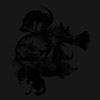 Retaining the sense of minimalism and drone that the label has put itself at the forefront of, Horseback forgoes the dark creaky sounds and quiet moments to instead crank up the amps into full on stoner rock mode. Sticking to repeated mantras of Sabbath inspired grind, there is a sort of kinship to the likes of Loop and Spacemen 3 in approach, even if the sound is much different.
Retaining the sense of minimalism and drone that the label has put itself at the forefront of, Horseback forgoes the dark creaky sounds and quiet moments to instead crank up the amps into full on stoner rock mode. Sticking to repeated mantras of Sabbath inspired grind, there is a sort of kinship to the likes of Loop and Spacemen 3 in approach, even if the sound is much different.
The solo project of Jenks Miller, he is aided here by drummer John Crouch on three of the tracks, and second guitarist Scott Endres on two. The initial three songs follow a similar formula of repetitive drums, distorted bass, and fuzzed out riffing. While that sounds somewhat mundane, the execution is anything but.
Opener "Invokation" fades in the taut drums and fuzzed out bass that are expected from the previous description, but off in the distance there is some really varied melodic guitar playing that normally would clash with the rhythm section. Vocals appear too, with a definite bend to the black metal/grindcore sound akin to Cookie Monster. Normally, this is a turnoff for me, but in this odd amalgamation, it works rather well. The melodic elements pull ahead towards the end, and the whole track has that minimalist repetitive sound that Loop did so well, but less psych and more metal.
"Tyrant Symmetry" is cut from the same cloth but stripped down a bit more and focused more on the melodic guitar work and the growled vocals. There is a definite dynamic shift to the piece, with the change to melodic playing becoming even more pronounced in the middle section. Otherwise it follows the similar path of repetition and intentional simplicity.
The title track leans more on melodic lead guitar work with an even more '70s rock tinge to it, especially when bolstered by the overdriven bass and repetitive drums. The intentional minimalism carried over from the first two tracks does make it feel like a bit like La Monte Young arranging his own version of "Paranoid," which is a good thing.
The biggest departure comes with the album closer, "Hatecloud Dissolving into Nothing," which drops the drums and the bass to instead make it a 16 minute study of chiming guitar textures. There does remain some dark elements in the cloud, namely the guttural vocals that arise here and there like an angry troll poking his head out, but the focus is squarely on the delicate guitar sound. As the track nears its end, the chiming guitar shifts via processing to be sweeping symphonic layers that push the track into soaring ambience that is completely unexpected given the rest of the disc, but entirely wonderful.
The Invisible Mountain is a prime example of an artist pursuing the drone/minimalist route without focusing too heavily on massive detuned guitar riffs or reverb shrouded electronic passages. Horseback takes the idea of drone to the composition level, rather than just the sonic one, and gives new life to a stagnating genre.
samples:
Read More
- Administrator
- Albums and Singles
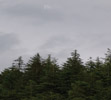 Justin Broadrick had previously stated that this album was going to be a return of the more "organic" Jesu sound, and compared to everything since Conqueror, it by far is. Consisting of a single 18 minute piece, Infinity feels much more in league with some of the more melancholy Godflesh work, and especially the first Heart Ache EP. Any naysayers that say the man has gone soft won't feel the same way after this one.
Justin Broadrick had previously stated that this album was going to be a return of the more "organic" Jesu sound, and compared to everything since Conqueror, it by far is. Consisting of a single 18 minute piece, Infinity feels much more in league with some of the more melancholy Godflesh work, and especially the first Heart Ache EP. Any naysayers that say the man has gone soft won't feel the same way after this one.
Although it opens with sparse sequenced keyboards and gentle guitar, less than three minutes in a mechanized double kick drum slams in flanked by deep, detuned riffs. Sounds a lot like Godflesh, no? In a way, yes, but the sustained pure guitar tone and Broadrick’s singing make it clear that this is a Jesu record, even if it is a harder edged one.
This dichotomy stays consistent throughout the album, the deep riffs and plodding drum machine (I think the old Alesis SR-16 reappears here) are contrasted with Broadrick’s soft vocals and delicate guitar playing. Even the slower sludgy moments are still laced with chiming guitar that is more delicate than anything Godflesh ever did, and the building tension through the first quarter of this disc is great.
Some 16 minutes in, however, Broadrick goes into hate scream mode, a sound that he has mostly abandoned since the latter half of "Ruined" from the debut EP. I have never been a fan of that vocal style, one of the reasons I don’t look at Streetcleaner as fondly as many others due. Here it comes across a bit too forced and unnecessary. It might be personal preference here, but it is too over the top. Those who pine for the death metal tinged days of Streetcleaner will be happy I bet.
The second half stays rooted in the lugubrious pace the album began with, slow riffs that feel a bit like a less metallic version of "Merciless" that eventually fade into the more gentle post rock guitar sound of Jesu. Again, it’s reminiscent of the first two releases though a bit more sparse and somewhat like the split with Battle of Mice. The Japanese pressing again adds bonus material, in the form of "Infinity 2," essentially an alternate mix of the last segment of the track that is a bit more dense than what is presented here, though not by much.
For the most part the electronic elements are minimized on this disc, mostly relegated to the drum machine and the occasional synth flourish, far less than on the Envy split or the Why Are We Not Perfect EP. It is definitely more organic and "traditional" sounding than most of the recent Jesu work, stripping the sound down to its barest essentials, and demonstrating that Broadrick does not need to rely on machines or heavy digital processing to make a compelling work.
While the format makes causal listening difficult, "Infinity" is an ever shifting work that never bogs down or becomes stagnant. Even with its longform style, there are discernable segments that are as beautiful or as raw as anything Jesu has done, and pulls away from the ever-increasing pop sensibilities that have been developing. It’s not quite the headbanging fest that old school Godflesh fans have been waiting for, but I’m sure they’ll still find much to like here.
samples:
Read More
- Administrator
- Albums and Singles
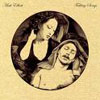 Matt Elliott is an expert at covering his music in melancholic dross. This approach is very fitting for Failing Songs, as the subjects explored through his lyrics are not the most uplifting. Furthermore the instruments used have piquant old world flavor, recalling a time when extended families relied on making music together as a way of escaping the dreariness of life. These songs of failure focus on humanities shortcomings and the steady downward decline of civilization. It's perfect for a time when the evidence of human failure is everywhere to be seen.
Matt Elliott is an expert at covering his music in melancholic dross. This approach is very fitting for Failing Songs, as the subjects explored through his lyrics are not the most uplifting. Furthermore the instruments used have piquant old world flavor, recalling a time when extended families relied on making music together as a way of escaping the dreariness of life. These songs of failure focus on humanities shortcomings and the steady downward decline of civilization. It's perfect for a time when the evidence of human failure is everywhere to be seen.
The electronic darkness Elliott embodied with demonically skewed drum and bass in the Third Eye Foundation has since been transferred into the sound of brooding folk music. Taking his cue from Gypsy and Sephardic traditions, from the music of people who have long been oppressed, his sad sounds are all the more sincere. In this sense Failing Songs manages to joyfully participate in the sorrows of the world.
People who feel comfortable accepting the status quo might feel uncomfortable when listening to this album. They would be better off taking Xanax and watching reality TV. The whining of the fiddle and multi-tracked voices of “Our Weight In Oil” starts things off on a somber note. He laments that “we lost our lives to worthless oil / and were worth less than our weight in oil / but the stockholders all had their pay / but it's we who clean their mess anyway.” The theme of corporate tyranny is fleshed out further on “Chains.” Here he sings “we’re free to do exactly what were told / we’re free to buy exactly what we’re sold / we’re nothing more than slaves.” A sea shanty filled up with a saturated overdriven guitar line, it very much calls to mind images of perilous maritime journeys, and human cargo chained up in the hull. He goes on to explore subjects of war, and the soldier pawns killed on the whims of politicians, assassination of politicians as a reasonable response, and the argumentative stalemates that so often happen in relationships. And of course, it all ends with an extended trip to the grave.
Listening to this music took me on an introspective tour down an embittered memory lane. It was like being handed a microscope with slides of faults and shortcomings, both personal and collective. His bruised political ire never lets up. Not one moment of light shines through, except the highly focused beam he points on the human predicament. Yet it is his talents as a song writer and multi-instrumentalist that allows him to take on difficult subjects and make them beautiful. The blows dealt by his unflinching look at human nature are softened by employing melodious mandolins, wheezing accordions, and the delicate tinkles of piano. In the end, all the pieces fit together to make an album that is very mournful and full of grace.
samples:
Read More
- Administrator
- Albums and Singles
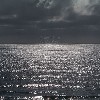 On cool summer mornings along the Pacific, clouds will roll in from the sea and blot out the sun, suffusing the land with a luminous gloom. Like an overcast day, Desolation Wilderness envelopes the listener by obscuring the outside world. In New Universe, the group blends a wide range of instruments and voices into wavelike masses of hazy rock and roll, evoking the loneliness and grandeur of a deserted coastal highway.
On cool summer mornings along the Pacific, clouds will roll in from the sea and blot out the sun, suffusing the land with a luminous gloom. Like an overcast day, Desolation Wilderness envelopes the listener by obscuring the outside world. In New Universe, the group blends a wide range of instruments and voices into wavelike masses of hazy rock and roll, evoking the loneliness and grandeur of a deserted coastal highway.
For listeners raised on oldies radio and camping trips, Desolation Wilderness will sound immediately familiar. Even at its most dramatic, their music has a muted quality that mimics the noise of some distant AM station. Melodies emerge and then vanish, like a phrase from a favorite song caught through layers of static. Nicholaas Zwart, the main vocalist for the band, sings in a high, clear voice that would be perfectly intelligible were it not submerged under gallons of reverb. The effect garbles his words, giving them the tone of a bedraggled, early-morning phone call. They suggest rather than proclaim, sigh instead of shout. Zwart’s lyrics merge with the sounds around them, their precision lost in the ether.
Alone, the production on New Universe is not enough to suggest vast open spaces. The songs already have that quality built into them. They resemble the surface of the ocean pictured on the album cover: an endless progression of swells emanating just over the horizon. The opener, “Venice Beach,” begins with silvery cymbal fills anchored by floating bass notes. It slowly builds, until the main riff emerges from the din, crashing like breakers against a pier. Many of the songs feature interludes, where the band will slow the tempo and let their instruments ring out, notes glimmering like tide-pool reflections. Tambourine, glockenspiel, analogue synths, and wood-blocks all blend into a single chiming, clicking mass, holding the music in supple tension as the band awaits the return of the main melody.
No matter how diffuse the songs on New Universe become, they never degenerate in formless noodling. The band keeps its momentum, pushed forward by drummers Evan Hashi and Andrew Dorsett. Both play in a relaxed style with crisp snare and cymbal work. In “Slow Fade,” drum taps weave between lilting guitar lines, the rhythm at once stiff and gentle. The beat fades for a moment but re-emerges with even more confidence, ending the song in a shimmering coda.
Desolation Wilderness conjures beauty with deceptive ease. Since their music is both laid-back and melancholy, it is easy to reflexively think of them as underachievers. Generating spacey sound-effects may be easy, but making the result engaging is not. So many attempts at evoking atmosphere fail because of shear weightlessness. New Universe flirts with being superfluous but still holds-up under serious listening. Desolation Wilderness should be proud; most bands don’t make it out of such nebulous territory intact.
samples:
Read More
- Administrator
- Albums and Singles
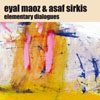 The first time needle was laid to wax on a hot side of jazz, there was certain to be faces frozen in the pulsations and perversions emitted from the victrola funnel. How was one to dance to such syncopated cacophony, let alone find relaxation and good dinner conversation? Of course, evolution does the dirty work for progressive thinker, weeding out the fearsome and strengthening the adventurous. As jazz grew and transformed out of Chicago speakeasies and Mississippi Delta juke joints, it found a larger audience ready for the challenge of gyrating brass and nimble fingers. It’s from this grand tradition that guitarist Eyal Maoz and drummer Asaf Sirkis mold Elementary Dialogues—an album rich in tradition and yet no regard for it.
The first time needle was laid to wax on a hot side of jazz, there was certain to be faces frozen in the pulsations and perversions emitted from the victrola funnel. How was one to dance to such syncopated cacophony, let alone find relaxation and good dinner conversation? Of course, evolution does the dirty work for progressive thinker, weeding out the fearsome and strengthening the adventurous. As jazz grew and transformed out of Chicago speakeasies and Mississippi Delta juke joints, it found a larger audience ready for the challenge of gyrating brass and nimble fingers. It’s from this grand tradition that guitarist Eyal Maoz and drummer Asaf Sirkis mold Elementary Dialogues—an album rich in tradition and yet no regard for it.
Maoz and Sirkis drench their jazz duets in blankets of swing, metal, dance, and folk—odd combinations that produce 11 pieces of tripped out bliss. Rather than focus on delivering concrete compositions stuck in stuffy penguin suits, Maoz treats his guitar like ancient rock gods. The strings beg for mercy with every bend, stretch, slide, and pluck. Likewise, Sirkis is well versed in assault, pounding the skins, playing foil to Maoz at each turn.
Elementary Dialogue begins with the eager island twang of “Reggae.” Maoz barely drips his wick in the Jamaican export, leaving Sirkis’ backbeats to produce the stoned grooves of chill dub. Maoz foregoes the obvious, producing slap-dashed guitar lines reminiscent of Shack-Man era Medeski, Martin, and Wood. “Duo” investigates modern guitar in a sparse setting; Maoz delivering carefully plotted notes and aggressive strums with a Loren Connors cool and a Sir Richard Bishop Mediterranean melody. All of Maoz’s influences coalesce inside “Hole,” a full-on seizure of Neil skronk, Hendrix psych, and Tom Verlaine attitude, and if not for Sirkis’ erratic drum solo, the track would be Elementary Dialogues’ shining moment.
The beauty of Maoz and Sirkis’ partnership is in balance. Never does a Maoz jam try to outshine Sirkis’ many fits nor does Sirkis ever trample over Maoz’s quiet moments with his furious tom fills and cymbal attacks. Look no further than Elementary Dialogues’ strongest tracks: “Strip” and “Miniature.” As the titles suggest, each is a nugget of experimental self-control. Maoz and Sirkis are eager to cover A through Z with every ounce of music produced, but it’s what is missing on “Strip” and “Miniature” that find them as stand-outs; gone are the meandering skronks and overdone lounge fills. The space between the guitar and drums is allowed equal billing, allowing for the classic smoky atmosphere of ghetto dive bars and forgotten clubs to permeate through the music. The appeal of jazz has always been its cool veneer; something Maoz and Sirkis capture in their best moments.
Elementary Dialogues won’t wow followers of jazz giants known the world over for their skill, but Eyal Maoz and Asaf Sirkis will convert the jazz meager—those who have always feared what the cooler side of music has to offer. What Maoz and Sirkis create isn’t fusion but it melds together the worlds of rock and jazz with veteran know-how.
samples:
Read More
- Administrator
- Albums and Singles
 It may not be an earth-shattering concept to go analog, but this is not your average take on the idea either. Presenting one nearly hour-long track, there is plenty of room here for this Russian artist to sprawl out and develop ideas, but Alexey, the project's sole protagonist, seems to feel little need for sticking to anything, instead bobbing around from idea to idea with fluid and exciting ease. Pulling from as many realms as he can and synthesizing them into one bombastic go of it this is, as the title enthusiastically suggests, timeless stuff that could just as well be some odd Soviet new-wave experimental excursion as it could be the basis of future beat culture worldwide. If only...
It may not be an earth-shattering concept to go analog, but this is not your average take on the idea either. Presenting one nearly hour-long track, there is plenty of room here for this Russian artist to sprawl out and develop ideas, but Alexey, the project's sole protagonist, seems to feel little need for sticking to anything, instead bobbing around from idea to idea with fluid and exciting ease. Pulling from as many realms as he can and synthesizing them into one bombastic go of it this is, as the title enthusiastically suggests, timeless stuff that could just as well be some odd Soviet new-wave experimental excursion as it could be the basis of future beat culture worldwide. If only...
If an hour-long track of analog beats and drifting electronics sounds a bit heavy-handed, fear not. This is as light and warm as it gets, with Alexey's instrumentation guiding the way between miniatures, each of which explores a new incantation of the musician's sound. Some of them are pure rave drift, with little ticking beats tickling the underbellies of vast stretches of electronic tone; others take a more spaced out stance, pointing their eye out toward the nebulae and watching it drift apart while marbles crash underfoot. Each one drifts in and out as effortlessly as the next, some lasting longer but none exceeding their desired timetable.
As with so many of the smaller run labels today, Stunned's limited pressings have allowed the album maximum conceptual freedom. These could easily be broken into tracks (of which their would be many) and sequenced as sketches, but the coagulation of the ideas into a single long take means gives the whole a much more weighty feeling removed from the brevity of the numbers individually. Rapid fire drum machine numbers with laser beam stutters rest alongside brooding drone nod-offs, but the necessity of experiencing one before the other provides real shape to the output.
With so many ideas packed into it though, it's a wonder the album maintains the cohesion it does. This never sounds divided, no matter how many areas are drawn from, and even the stoned out white hum of one part, whose only accompaniment is aimless squiggling above, feels as if it is arriving from the same voice as the strictly beat oriented tracks. Much of the material sounds more like early synthesizer experiments, with single staccato runs going ad infinitum, but these give a retro sterility that efectively clears the air for lush drone pieces that sound as if they could go be drawn out for, well, the entire album.
To some extent, the disc's most valuable asset is its ability to sound entirely removed from any context; it appears as a truly outsider work despite the clear reference points of its practitioner, which include everyone from Gordon Mumma to Asmus Tietchens to Aphex Twin. Still, it seems Alexey's most important influences lie far below the public radar, lying under the Russian streets in continual drift.
This is what keeps the music as exciting as it does. It is wisely constructed but also one step removed from that which it initially appears as: an infinitely rich take on synthesizer music that reveals more with every listen. Each detail is as unexpected and inconspicuous as the next, giving it a life far beyond many more consciously connected to these areas of musical output.
samples:
Read More
- Administrator
- Albums and Singles
 When I first encountered some of the experimental music coming from China, I was intimidated by the amount of people involved. Additionally, the presence of severe language barriers made tracking this stuff down a difficult challenge. The occasional CD-R, some online sources, and the remarkable Buddha Machine have let me dip my toe into this expanse of sound but a toe-dipping was where I had to halt. Thankfully, this anthology compiled by Chinese noise stalwart Dickson Dee has allowed for a massive insight into China’s music underground.
When I first encountered some of the experimental music coming from China, I was intimidated by the amount of people involved. Additionally, the presence of severe language barriers made tracking this stuff down a difficult challenge. The occasional CD-R, some online sources, and the remarkable Buddha Machine have let me dip my toe into this expanse of sound but a toe-dipping was where I had to halt. Thankfully, this anthology compiled by Chinese noise stalwart Dickson Dee has allowed for a massive insight into China’s music underground.
An Anthology of Chinese Experimental Music to me is a modern equivalent of Brian Eno’s No New York, an insider’s view of hermetic geographical scene. While it covers a much longer time period than Eno’s compilation, it is still a snapshot of a living, breathing China that is lost in the western media’s portrayal of the massive country. Having quickly exhausted the few artists I recognized, the rest of the box set is a good education. With over 40 artists featured, this kind of peek into the Chinese underground would be otherwise impossible. What is noticeable the whole way through is how high the quality of the performances is on the four discs.
Out of the more well known artists included, the pieces included are largely representative of their work. Two of the contributions that feature Dickson Dee are the kind of lush, ambient sounds that would normally be found on a release on Touch Records. His long career peppered with international collaborations make for a cosmopolitan approach to electronic music. As per usual, Torturing Nurse push all the levels into the red; their punishing noise reminiscent of Japanoise artists. That both Dee and Torturing Nurse sound so like experimental music from outside of China may be due to their geography, Hong Kong and Shanghai (their respective bases) both having stronger ties with the outer world than other areas of China.
On the flip side of this coin, there are other well known Chinese artists who have taken note of international styles but have subverted them to their own needs. Li Jianhong seems to have forged a pure guitar technique that is as shocking the first time as my first encounters with Derek Bailey and Keiji Haino. Both his solo performances and his work with Huangjin as D!O!D!O!D! are a riot of guitar, noise and adrenaline. On a similar note, Shenggy, vocalist and rhythm maker with White, combines what she learned during her stint as a musician in Beijing with her later move to Europe to develop a distinctive style of her own. Unlike the staid elegance of her work in White, “Junggy’s Decay” sees Shenggy go for the jugular, furious and feral. Both Jianhong and Shenggy merge different musical lineages into something new and beautiful. It is not just a case of east meets west or some other trite notion, it is the same sort of reinvention seen during '70s Germany; a co-opting of outside sources in order to reinvent the wheel.
They are not alone in this reinvention. The other artists on this anthology cannot be lesser known because of the quality of their work as most of them show a flair for invention and inspiration. Alice Hui-Sheng Chang’s vocal experiments are out there on their own, playing not only with her own voice but the space in which she finds herself both physically and mentally. Elsewhere, “Dream a Little Dream” by Beijing’s Nara is a slowly evolving piece of gentle techno-infused electronic music, the daintiness of the rhythm and melodies giving the music a natural grace. This grace is present throughout the set, surprising me because of my previous exposure to the more extreme side of Chinese experimental music. Even when the music is violent, there is a balance underlying it that is a world away from the reckless abandon of other harsh noise artists. Ying Fan’s “L2255 mix” comes close to chaos but Fan shows a restraint which tempers the extreme sounds.
Although the anthology only looks at music made in the last 17 years, there is a mix of old and new guards in the selection of artists. As well as all the young upstarts, Wu Quan and Nelson Hiu (Dancing Stone) both represent the approaches of the older generation of experimental artists. Quan’s “Weather Forest” and Hiu’s “Two” represent two other sides of this expansive experimental movement in Chinese music, the former a journey through a land made of vibrant electronic sound whereas the latter incorporates singing and dizzying flute playing to startling effect. That these two older (but not old) artists contribute such thrilling pieces shows that this sort of experimentation in music is not a new trend but one that has been germinating for years.
Sub Rosa have surpassed themselves in bringing this music out into the light and the inclusion of short biographies and discographies in the sleeve notes are very much appreciated. The inclusion of an essay by Yan Jun and Zbigniew Karkowski provides both an insider’s and an informed outsider’s view of this scene, giving further life to the project. Finally, Dickson Dee has done a sterling job in weaving together all the disparate strands of all these artists into one taut rope; a compilation based on geography rather than genre has never sounded so coherent.
samples:
- Nara, "Dream a Little Dream"
- Jedung Kying, "Dabao"
- Alice Hui-Sheng Chang, "There She Is, Standing and Walking on her Own"
Read More
- Administrator
- Albums and Singles
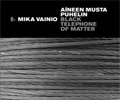 On his fourth solo album for the label, one half of Pan Sonic passes on the bare minimalist techno pulse of that band, as well as his own Ø side project, and instead focuses on pure electronic sound that has all of the austerity of an art gallery installation with Dadaist sound cutups and a comfort in drifting into painful noise, as well as near silent sonic territory.
On his fourth solo album for the label, one half of Pan Sonic passes on the bare minimalist techno pulse of that band, as well as his own Ø side project, and instead focuses on pure electronic sound that has all of the austerity of an art gallery installation with Dadaist sound cutups and a comfort in drifting into painful noise, as well as near silent sonic territory.
The cut-and-paste randomness is most evident in the opening piece, "Roma A. D. 2727." While the title sounds like it could be a very bad sci fi movie from the 1970s, the sound is a variety of sweeping digital lines of static, shrill sine waves that morph into sputtering white noise, and the occasionally regal orchestral sweep of synthetic sound. Sometimes roaring and harsh, and other times it drops to near pure silence, it shambles without any particular flow, for better or worse. It doesn’t have a sense of tight composition, but instead feels like random pastiches slapped together.
"Silencés Traverses Des Mondes Et Des Anges" has a more consistent structure to it, beginning with bird squawks, noise, and rain, like a post-apocalyptic soundscape. These sounds subtly segue into gentle stuttering waves of white noise. Occasionally these blast into more forceful territory, and occasionally matched with what sounds like an actual or synthetic didgeridoo, before dropping out to silence and then miniscule found sounds.
Dedicated to John Duncan, "Hautaa Hevosen Pää" ("Bury a Horse’s Head") is a more rhythmic composition, beginning with icy ambience and static laced scrapes, there are buried melodies and reverberated textures that are more overt throughout. The psychedelic low frequency pulses and phased static buzzes give it a much different sound quality than those that preceded it. "In A Frosted Lake" is a very descriptive title: being the most reserved of the tracks, its subtlety causes it to slip into the background when listening, but its glacial sound are never fully ignorable.
"Ylimääräisen Antenni Lämpötilan Mittaus 4080 MHz: SSÄ" ("A Measurement of Excess Antenna Temperature at 4080 Ml/S"), besides sounding like an electronic engineer's doctoral dissertation, features ultrasonic hums and buzzes with chiming distant loops far off in the distance. At the very end small bursts of what could be popular music appear, though so heavily filtered and effected to render them unidentifiable.
"Swedenborgia" and "Hengityttajä" ("The Breather") are the most aggressive of the pieces. The former opens with field recording sounds but adds in power drill like bass tones and warm, fuzzy static.The volume drifts into harsh territories at times, and the end features what may be an actual real live cymbal, or a digitally modeled equivalent. The latter demonstrates a lot of quiet metallic rattling and pinging before massive static squalls and reverb buried crashes max out the intensity of the sound.
While demonstrating Vainio’s love for clinically sparse digital textures, I think it is somewhat of a weaker album than his work with Pan Sonic, where the staunch minimalism is wrapped around sparse beats rather than here, where it is presented anomalously. It is a good album for sure, but it doesn’t have the same unique or individualist sound that it could have otherwise.
samples:
Read More
- Administrator
- Albums and Singles
 It's rare for a remix to match an original, but then this isn't your standard remix. The setup being as it is, with Altz remixing the entirety of Roland P. Young's free/spiritual jazz classic "Isophonic Boogie Woogie," this is a more intimate affair, less based on creating new beats to old material than it is with providing an entirely new and updated look at an old classic. This is dangerous territory, but Altz is wise enough to let the original material take the fore. Sometimes this leaves a nagging desire for the original, but it does remain an interesting listen that reveals elements of the original not necessarily viewed so easily.
It's rare for a remix to match an original, but then this isn't your standard remix. The setup being as it is, with Altz remixing the entirety of Roland P. Young's free/spiritual jazz classic "Isophonic Boogie Woogie," this is a more intimate affair, less based on creating new beats to old material than it is with providing an entirely new and updated look at an old classic. This is dangerous territory, but Altz is wise enough to let the original material take the fore. Sometimes this leaves a nagging desire for the original, but it does remain an interesting listen that reveals elements of the original not necessarily viewed so easily.
Likely the most notable change in the way the album is restructured isn't so much in the source material, which serves as the carrot and leads Altz on the entire journey throughout, but in the incessant beats that run through the album, turning it into a grooving trance-like album with horn lines and jazz percussion steering the melodic content. "Crystaliquid Sky" begins with the tinkling of thumb piano, looping itself over clattering bells before absorbing into its fold a driving beat that will drive the remainder of the track, slipping in and out and carrying the work out of the studio and into the streets, reconfiguring an oddly metered bass clarinet line into an abstracted New Orleans swing line before diving into free sax skronk and canvases of rhythm.
Usually this sort of thing has limited appeal, laying the one trick—in this case, a beat—over the existing stuff but Altz has a way of keeping it interesting throughout, never just layering his material on top but turning Young's work inside-out and finding beats within the items already present. "Magenta Loops" takes an alarmingly Kenny G-esque sax solo and lays a bass heavy jungle groove beneath, giving it a light and spaced out euphoria. "Velvet Dreamin'" opens with treatings of the bass clarinet and rolling drums, staying as abstracted as the original without losing the feel of Altz's previous work on the album, taking on a loungey distortion for most of its length.
The least dance floor-worthy track is in the brief "Fly Times," but rather than disrupt the flow of the disc it actually serves as a welcome respite, finding languid horn lines and fluttering sax writhing beneath a thick electronic haze, a kind of cleansing of the palette before "Stillness (D'n'B Version)," a work done in conjunction with DJ Kensei lays on sci-fi feel on thick, representing the most electronically based piece here and one fairly well removed from the roots of the original. Still, the material makes its way in, but not in the same careful balance displayed on the rest of the disc.
The closing "Funks" also draws on a futuristically tilted beat, but it is better able to engrain Young's work in, giving it a richness. The moments where Altz takes over with his own material are somewhat weak, displaying a lack of direction, but the balance is better weighted than on the previous track. The track actually serves as a fine microcosm of the album as a whole, at its best representing the potential of blending such disparate stylistic elements and at its worst revealing the potential pitfalls of one artist working with another's material. When proper admiration of the material is given, it turns into a convening of minds; when it isn't it turns into a hacking up of something for seemingly egoistic means. Altz typically does a fine job of showing his love for Young's original, and it is those frequent moments that make the album an exciting alternative take.
samples:
Read More

